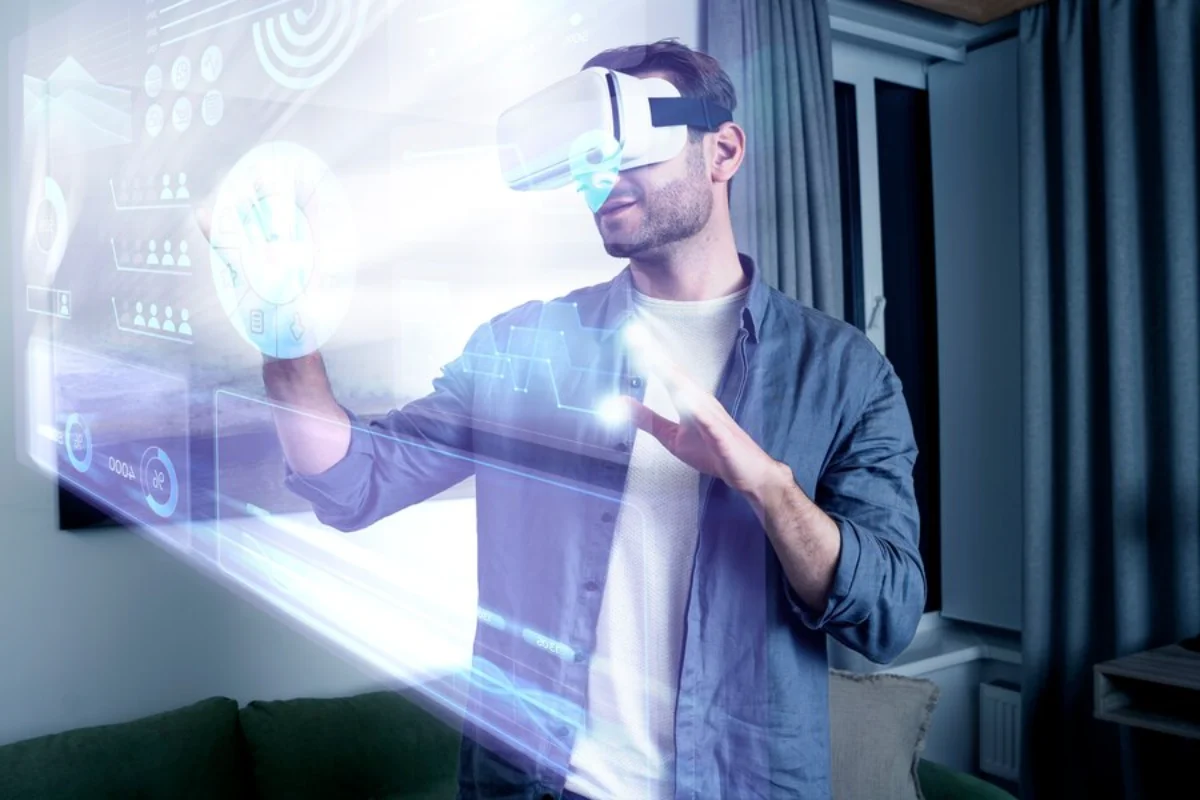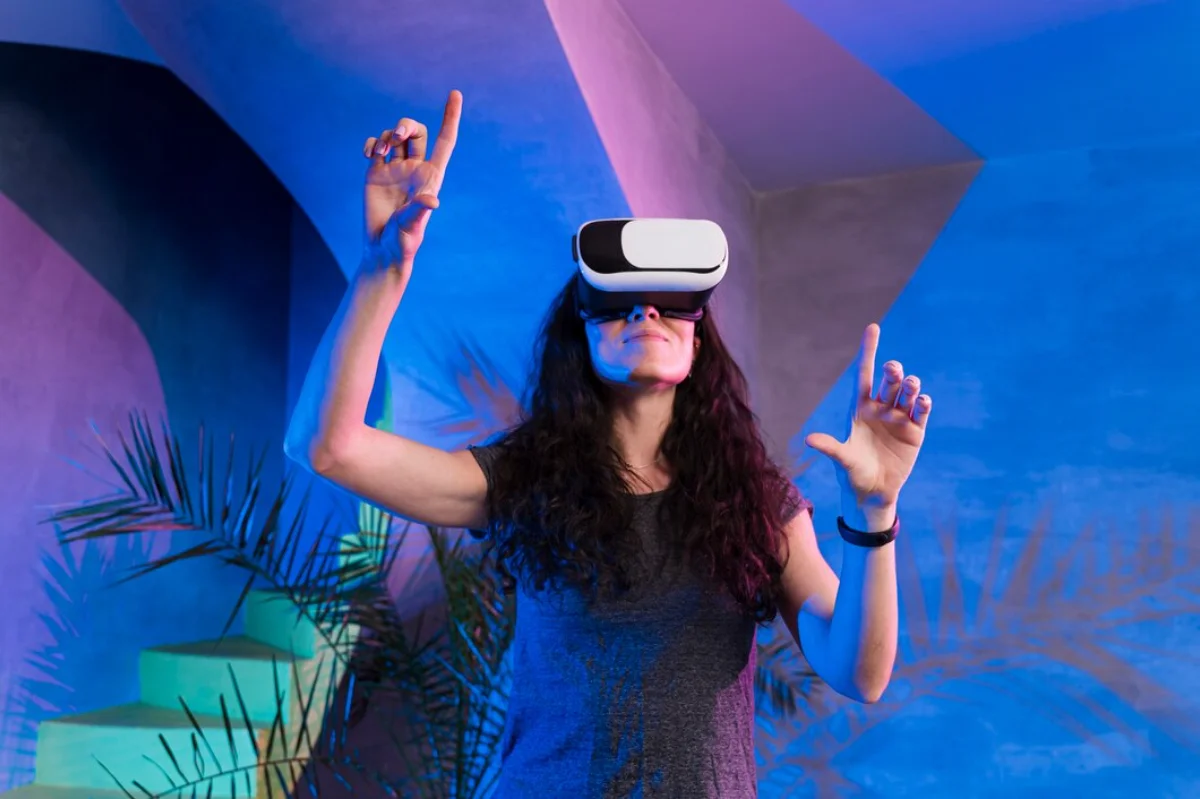
Virtual Reality vs Augmented Reality: What’s the Difference?
The debate between VR vs AR has gained momentum as both technologies continue to evolve and influence various industries. Virtual reality gaming and augmented reality apps are transforming entertainment, education, and even healthcare, offering immersive and interactive experiences that were once considered science fiction.
While both virtual reality (VR) and augmented reality (AR) provide enhanced digital experiences, they differ significantly in how they interact with the real world. This article explores the key differences between VR vs AR, their applications, and the future of these revolutionary technologies.

What is Virtual Reality (VR)?
Defining Virtual Reality
Virtual reality (VR) is a technology that immerses users in a fully digital environment, blocking out the physical world. VR headsets, such as the Oculus Quest, HTC Vive, and PlayStation VR, transport users into simulated worlds where they can interact with digital objects and characters.
How Virtual Reality Works
VR relies on:
- Head-mounted displays (HMDs) to create a 360-degree visual experience.
- Motion tracking sensors that respond to head and body movements.
- Haptic feedback provides sensory experiences like touch and movement.
Applications of Virtual Reality
1. Virtual Reality Gaming
Gaming is one of the most popular applications of VR. Games like Beat Saber, Half-Life: Alyx, and The Walking Dead: Saints & Sinners offer fully immersive gameplay experiences where players can physically interact with their environment.
VR gaming provides:
- Full-body interaction through motion controllers.
- Immersive storytelling with lifelike characters.
- Multi-sensory engagement with spatial audio and haptic feedback.
2. Training and Simulation
Industries such as aviation, medicine, and the military use VR for high-risk training scenarios. Pilots practice in flight simulators, while surgeons perform virtual procedures before attempting real-life surgeries.
3. Social and Business Uses
Virtual reality is not just for gaming; it is also transforming business. Platforms like Meta’s Horizon Workrooms enable virtual meetings where employees can collaborate in digital offices. This is particularly useful for remote teams and international businesses.

What is Augmented Reality (AR)?
Defining Augmented Reality
Augmented reality (AR) overlays digital content onto the real world, enhancing rather than replacing reality. Unlike VR, AR does not require full immersion but instead integrates virtual elements into a user’s surroundings.
How Augmented Reality Works
AR technology uses:
- Smartphones and tablets to display AR content (e.g., Pokémon GO, IKEA Place app).
- AR glasses and headsets, such as Microsoft HoloLens and Magic Leap.
- Object recognition and real-time data mapping to enhance user interaction.
Applications of Augmented Reality
1. Augmented Reality Apps
Apps like Snapchat and Instagram filters use AR to enhance photos and videos by adding digital effects, animations, and interactive elements.
2. Retail and Shopping
AR enables virtual try-ons for fashion and makeup brands. For example:
- Sephora Virtual Artist allows users to test makeup products digitally.
- IKEA Place lets customers visualise furniture in their homes before making a purchase.
3. Healthcare and Medical Training
AR is being used in medicine to assist in surgeries and diagnostics. Doctors can use AR overlays to visualise veins, organs, and medical conditions in real-time.
4. Education and Training
Educational institutions use AR to provide interactive learning experiences. Apps like Google Lens help students visualise complex concepts such as human anatomy and historical landmarks in 3D.

Key Differences: VR vs AR
| Feature | Virtual Reality (VR) | Augmented Reality (AR) |
|---|---|---|
| Immersion |
Fully immersive digital environment |
Enhances the real world with digital elements |
| Hardware |
VR headsets, controllers, motion sensors |
Smartphones, AR glasses, tablets |
|
Interaction |
Users interact within a simulated world |
Users interact with digital objects overlaid on the real world |
|
Use Cases |
Gaming, training, remote collaboration |
Retail, education, navigation, healthcare |
|
Mobility |
Typically requires a dedicated space |
Can be used anywhere with a compatible device |
Both VR vs AR have distinct advantages depending on the use case. While VR provides a deeper level of immersion, AR enhances everyday experiences by integrating digital elements into the real world.
The Future of VR and AR
The Growth of Virtual Reality
The demand for virtual reality gaming continues to rise as more developers create immersive VR titles. The integration of AI and VR will lead to:
- More realistic AI-powered NPCs in VR environments.
- Enhanced multiplayer VR experiences with real-time interactions.
- VR fitness and wellness applications expanding into mainstream adoption.
The Expansion of Augmented Reality
Augmented reality apps are becoming more advanced with the rise of 5G and AI. Future AR developments include:
- Wearable AR technology, such as lightweight AR glasses that replaces smartphones.
- Improved real-time object recognition for retail and industrial applications.
- Integration with smart cities to provide live AR-based navigation and assistance.
The Convergence of VR and AR
As technology advances, the lines between VR vs AR are beginning to blur. Companies like Apple and Meta are developing mixed reality (MR) devices that combine elements of both VR and AR. Future innovations may include:
- Mixed reality headsets that switch between AR and VR modes seamlessly.
- Holographic displays that integrate AR into everyday life.
- AI-driven VR and AR experiences that adapt to users’ preferences and habits.
Blurring Realities: The Future of VR and AR
Both VR vs AR offer groundbreaking experiences, but they serve different purposes. Virtual reality gaming provides deep immersion, while augmented reality apps enhance real-world interactions. As technology advances, both VR and AR will continue to shape entertainment, business, and daily life in unique ways, offering limitless possibilities for the future of digital experiences.
With the development of new hardware, AI-powered enhancements, and increased accessibility, the debate between VR vs AR is no longer about which is better but rather how they will coexist and complement each other in the digital age. Whether it’s stepping into a fully virtual world or enhancing the one we already live in, both VR and AR are set to redefine the way we experience reality.


